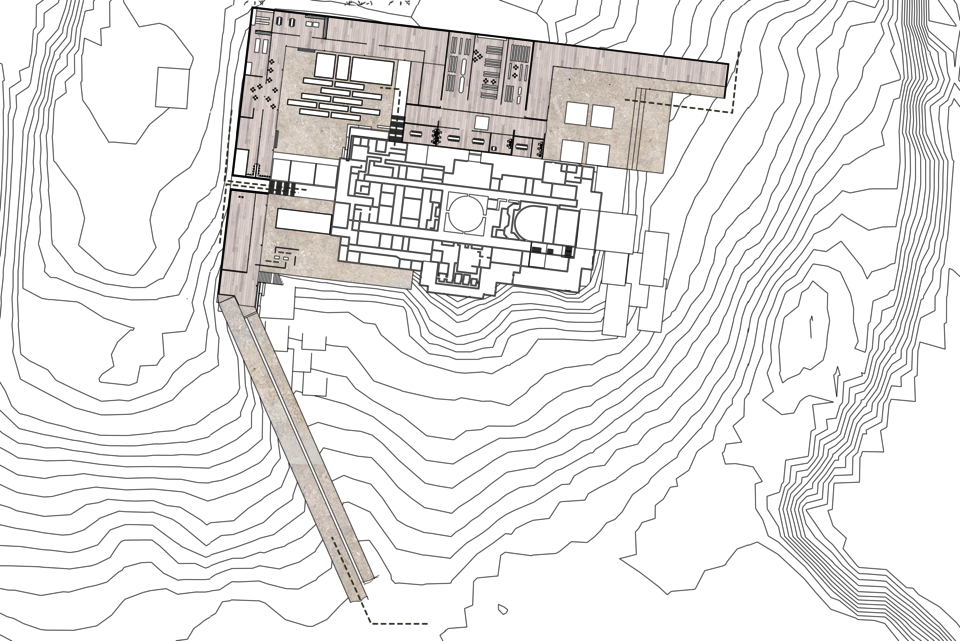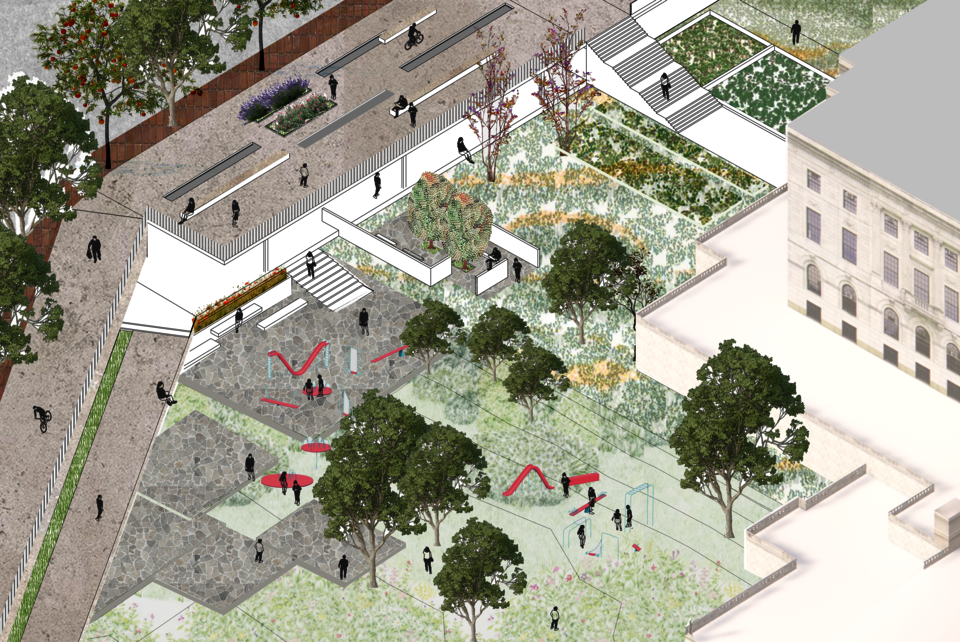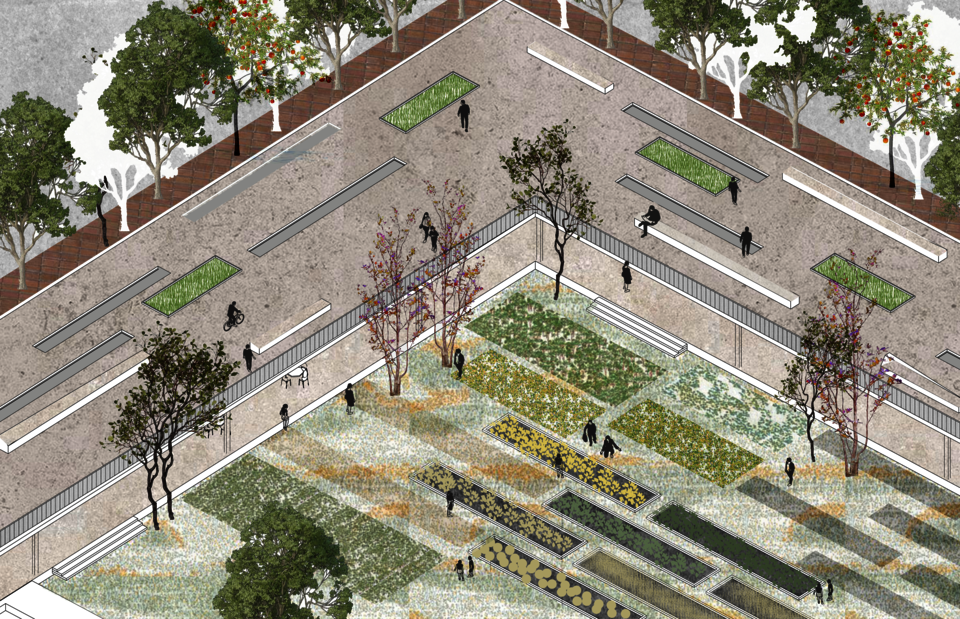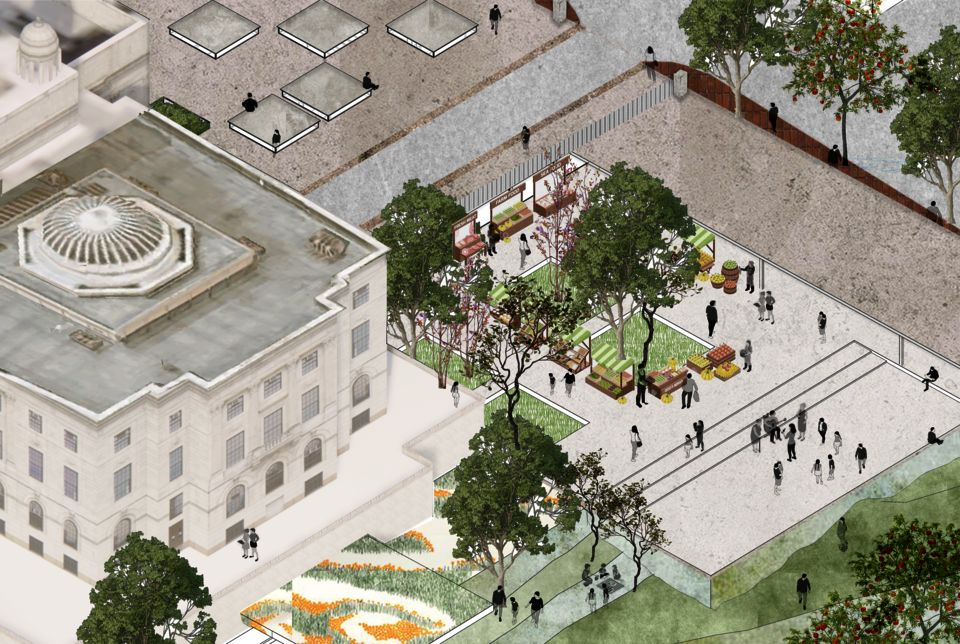Akanksha Hubli
The AgroWing
Mission Statement
The State House functions as a workplace for the council and legislative members and there is a dire need for tactical interventions that benefit local communities highlighting this majestic structure as the house of the people. Understanding the relevance of this structure that was built in 1904 to today’s world, and what it could hold as a testament to its future, this project celebrates Rhode Island’s diversity through its food culture. While prioritizing responsible stewardship of public land in terms of food nourishment, this program creates a network of spaces that revamps urban quality and repair. An additional wing brings together education, community gardens and food markets that benefit the state’s food system and its people.
Work Statement
The AgroWing is realized as a new architectural and landscape design providing permanent infrastructure for the site’s future as well as a substantial culture of recreation and labor. The current isolation of the State House is due to its topographic model where this marble palace sits atop a hill and contains intimidating access points. As an extension of an architectural solution, a ramp is introduced from the front entrance of the site that follows the existing edge climbing up the hill. This simply acts as an extension of the footpath creating a public plaza with seating and vegetation and provides a view into the didactic gardens and cafe. The functions of the new AgroWing is situated below the ramp with skylights that allow ample amounts of light into the space. A web of productive land is planned on an urban scale where parking areas, railways embankments and courtyards are reused for production of crops that are directly benefiting the communities. A vertical farm is incorporated under the south entrance of the State House covering an area of 11,500 sqft that can produce an average of 516 times as many tons of produce as field farms. The market square provides a platform for local farmers to sell their produce as well as educate themselves on new techniques of farming. While children are entering the State House to learn about governance, this new wing also contains educative gardens and workshops spaces that facilitate learning and celebration of cultures through food.
Image
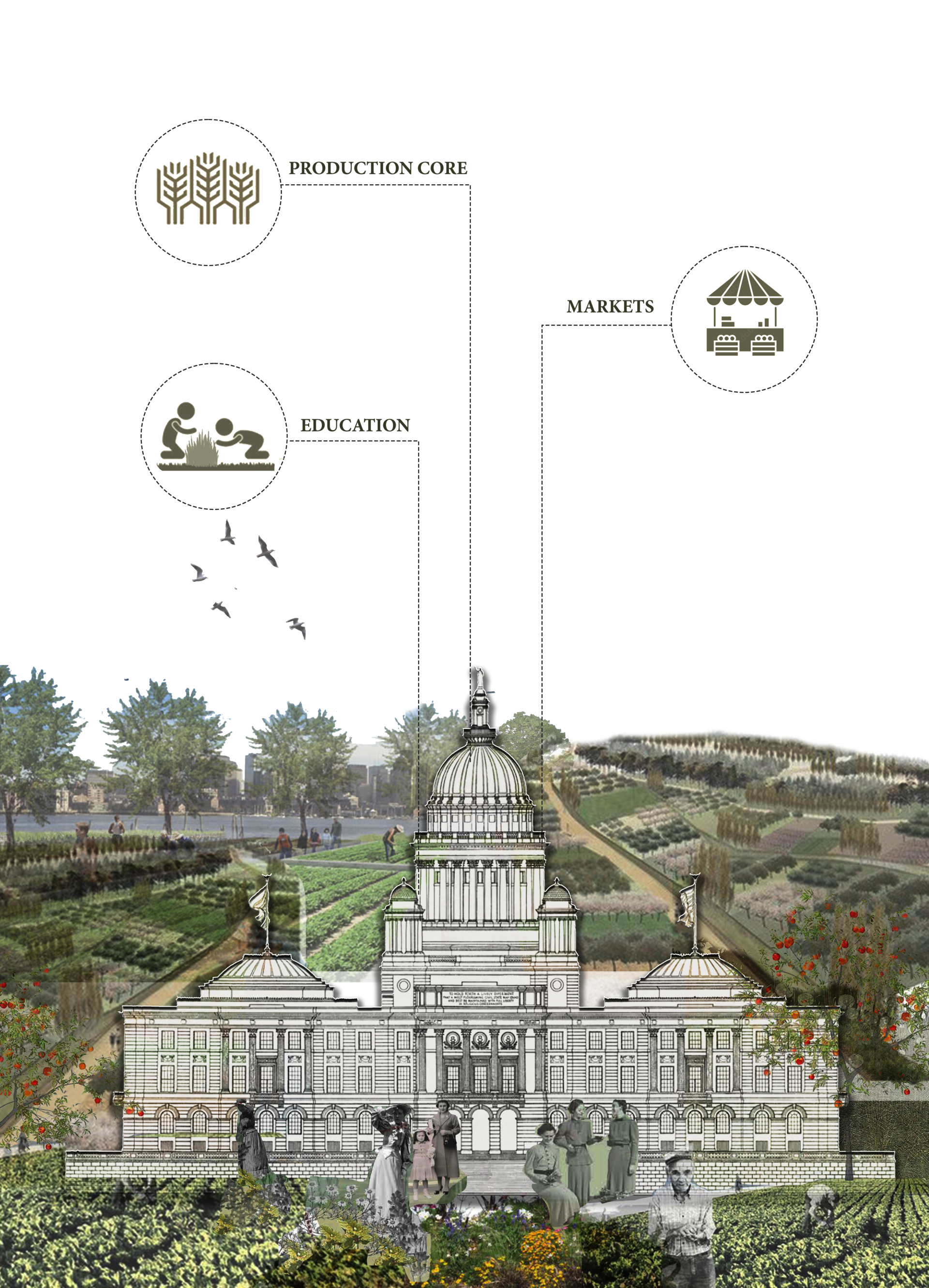
Concept Collage
Re-envisioning a productive Urban Future for Rhode Island
The State House functions as a workplace for the council and legislative members and there is a dire need for tactical interventions that benefit local communities highlighting this majestic structure as the house of the people. Here, we celebrate the Rhode Island’s rich tapestry through its food culture.
Image
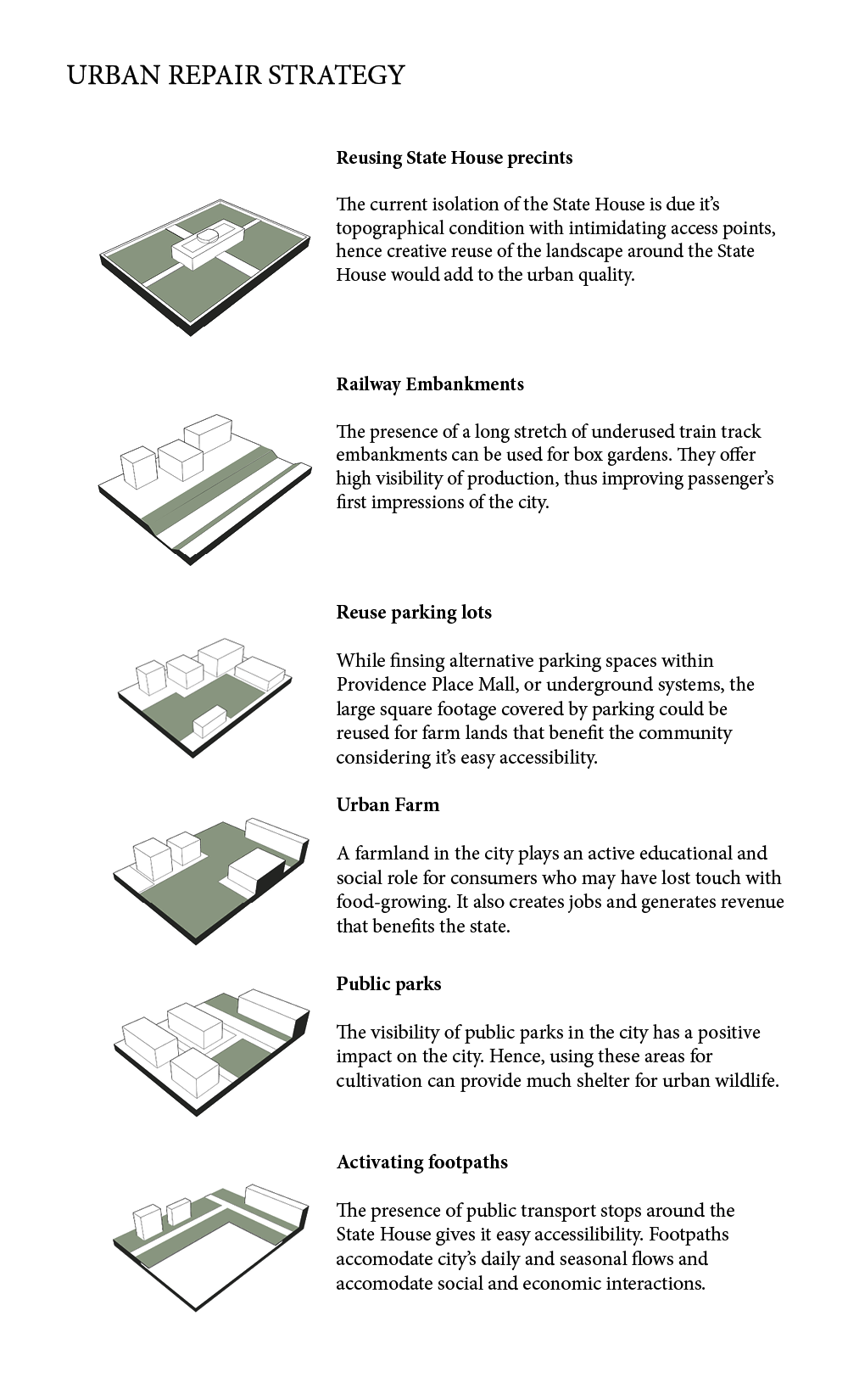
An Urban Repair Strategy
Possibilities for urban intervention that undertakes stewardship of land in terms of urban quality and food nourishment.
Understanding the relevance of this structure that was built in 1904 to today’s world, and what it could hold as a testament to its future, this project prioritizes responsible stewardship of public land in terms of food nourishment and the program creates a network of spaces that revamps urban quality and repair.
Image
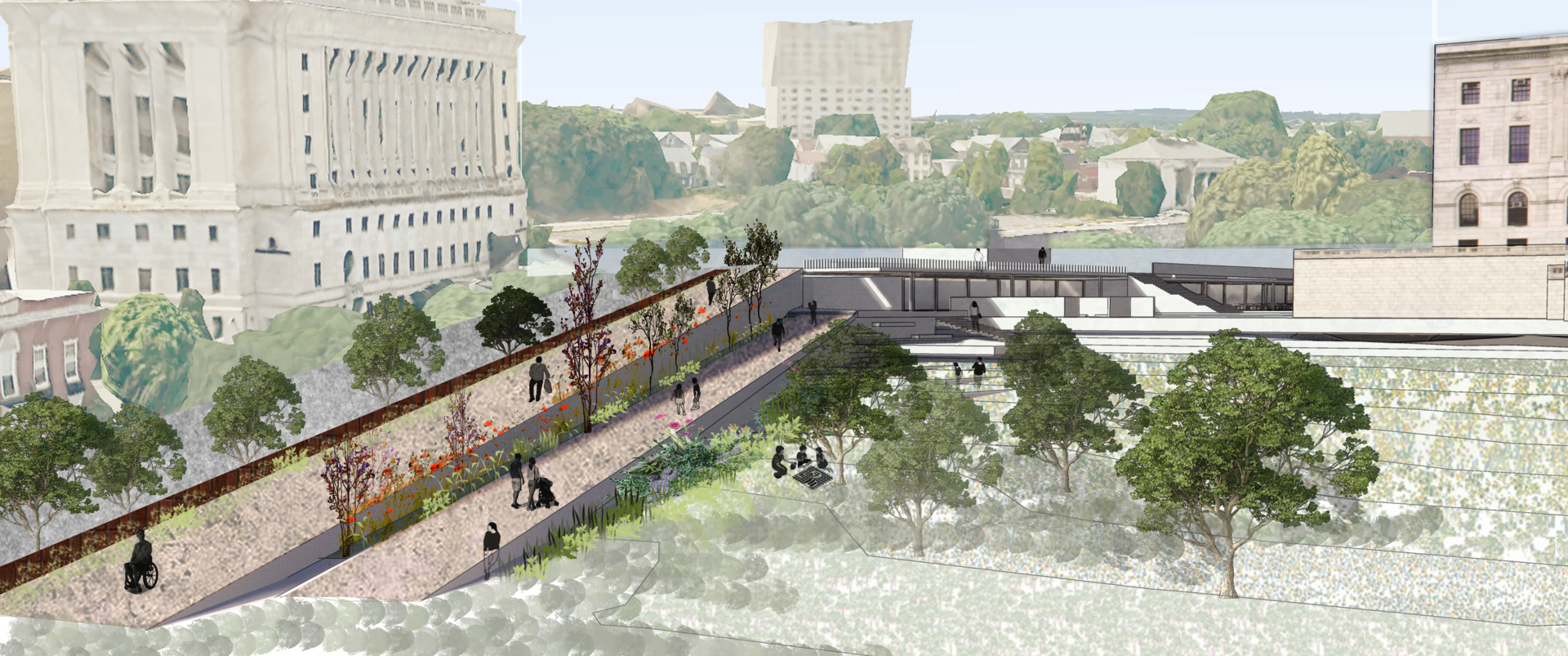
The Ramp
Realizing the landscape
The AgroWing is realized as a new architectural and landscape design providing permanent infrastructure for the site’s future as well as a substantial culture of recreation and labor. The topographic modeling of the site provides the underlying framework for the intervention. As an extension of an architectural solution, a ramp is introduced from the front entrance of the site that acts as a metaphor of welcoming people with its arms wide open.
Image
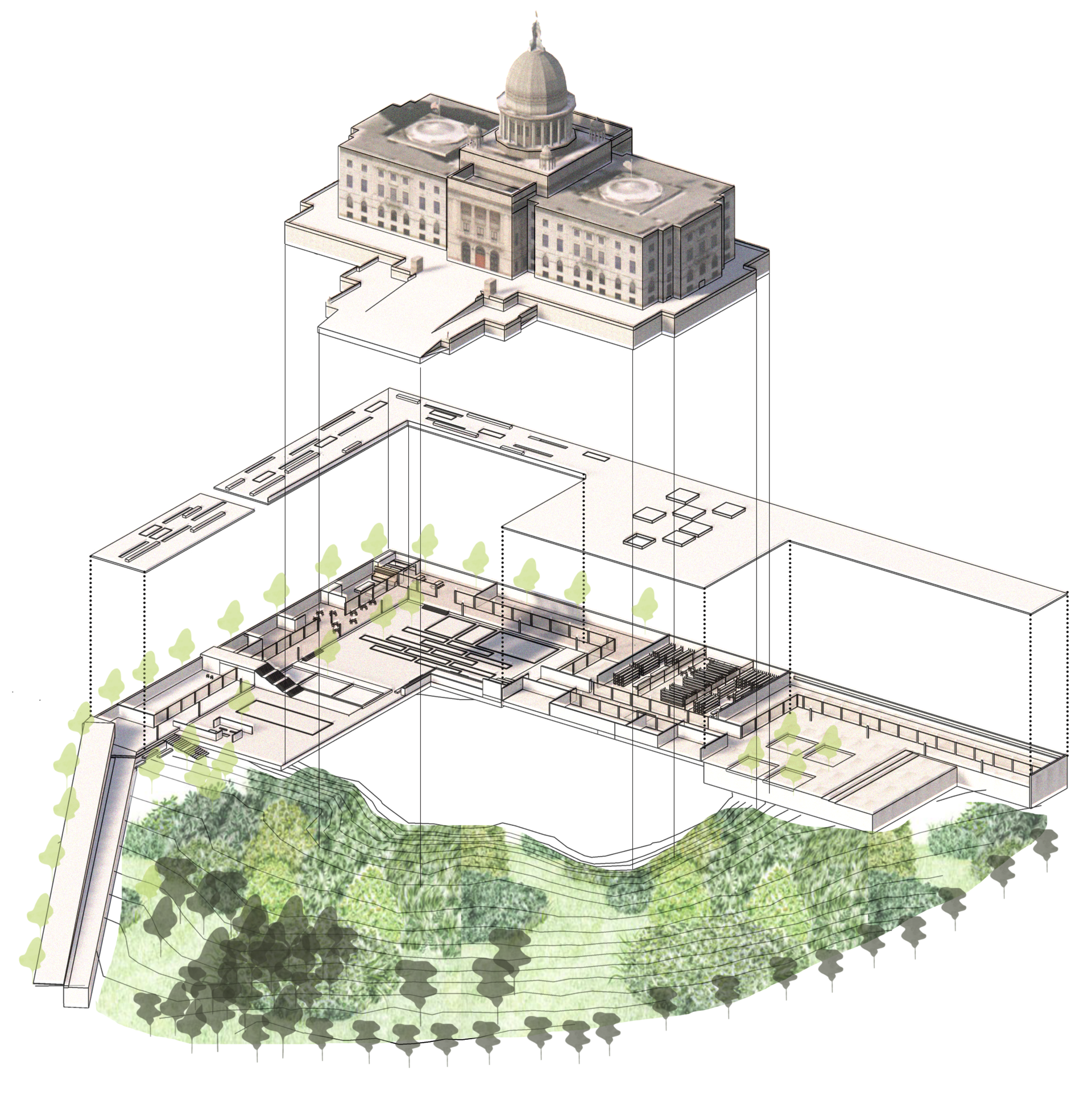
Axonometric View
Living Room of the People’s House
With direct contact with the earth, the new intervention acts like a bridge between the State House and its city. It organises spaces dedicated to food production, education, leisure and social life to promote mutual understanding and solidarity between the government and it’s food systems.
Image
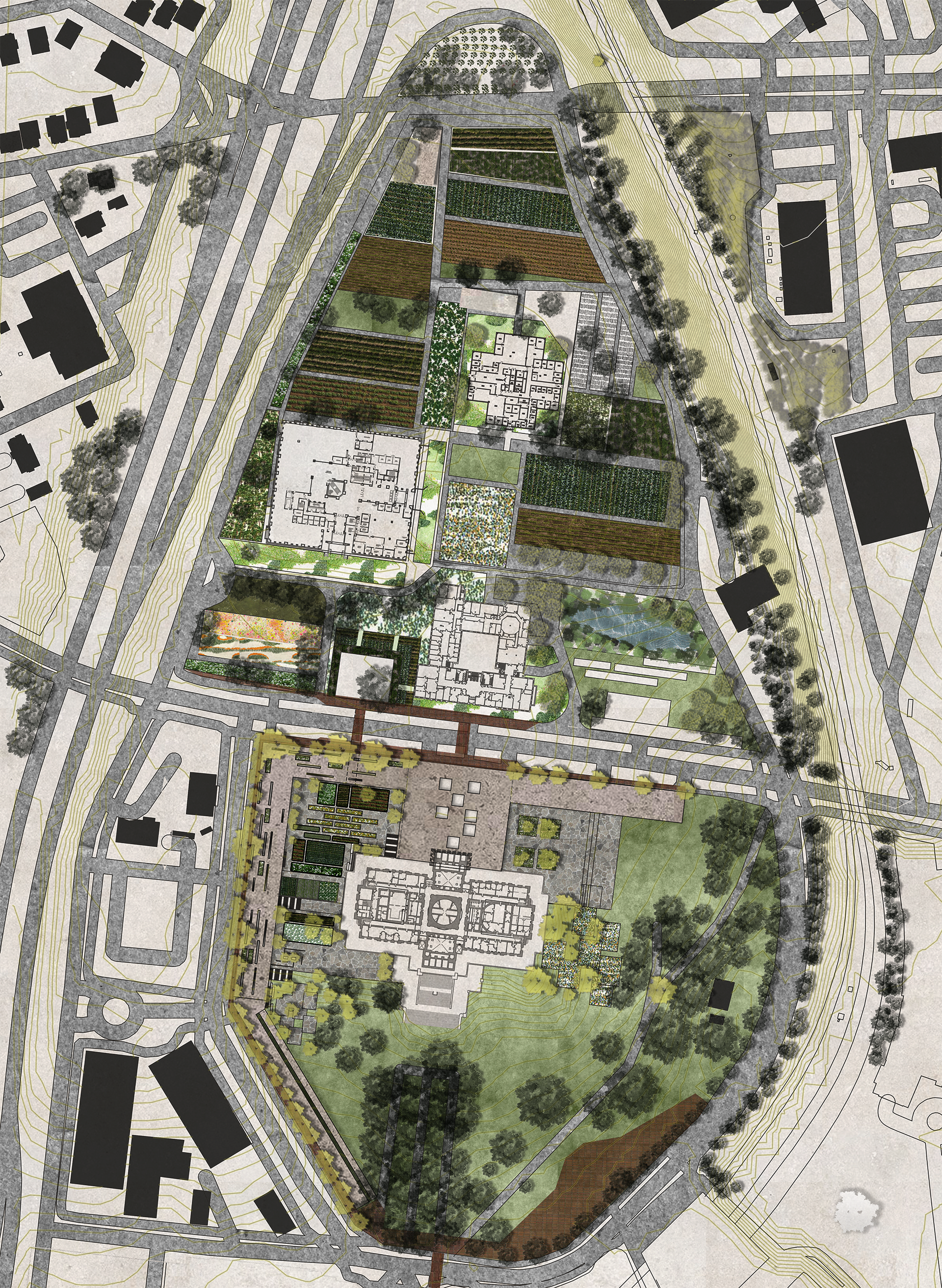
Master Plan
Rendered plan of the newly created urban form.
As stewards for the public realm, undersused urban lands are converted into productive fields that benefit the community. The AgroWing serves as a forecourt to the farm and includes a park, didactic gardens, exhibition or event spaces, vertical farm, and a market square.
- Architecture
- Ceramics
- Design Engineering
- Digital + Media
- Furniture Design
- Global Arts and Cultures
- Glass
- Graphic Design
- Industrial Design
- Interior Architecture
- Jewelry + Metalsmithing
- Landscape Architecture
- Nature-Culture-Sustainability Studies
- Painting
- Photography
- Printmaking
- Sculpture
- TLAD
- Textiles
